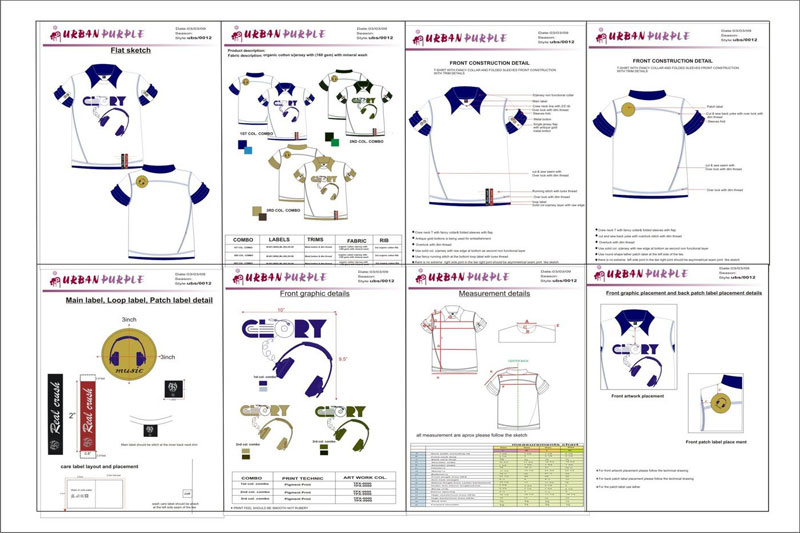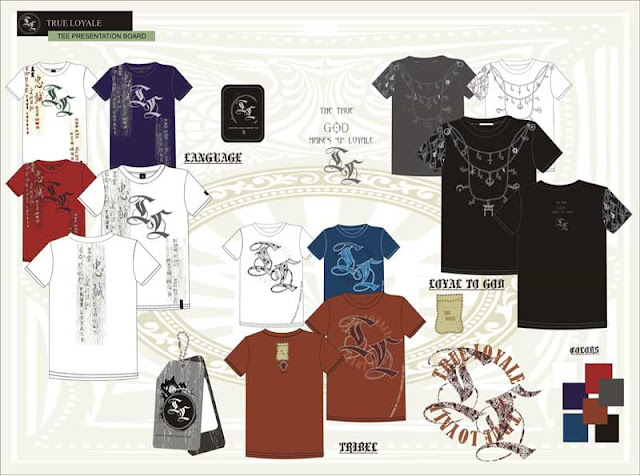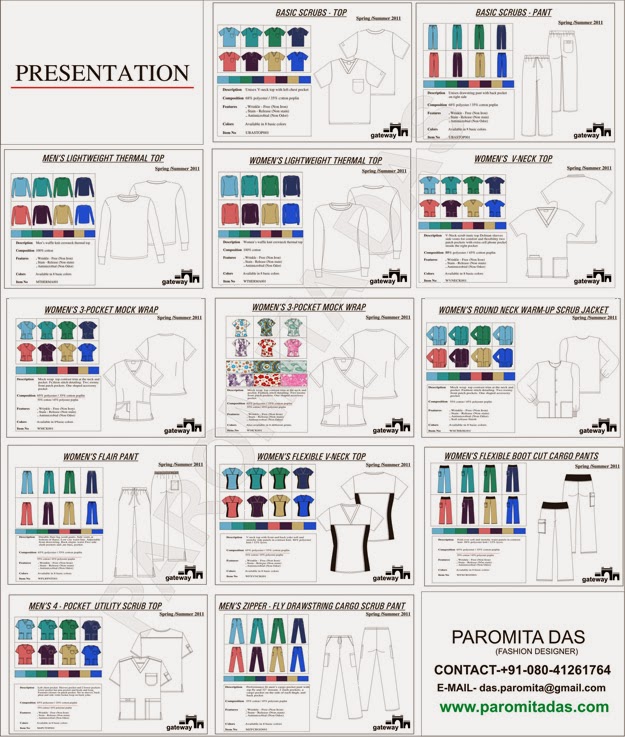As a fashion tech pack services for designers and brands, we maintain strong connections with the brands we collaborate with. We actively exchange experiences, providing valuable technical and market insights to foster the growth of our clients. In this blog post, we aim to share some valuable experiences our clients have graciously shared with us throughout our partnership. This post caters explicitly to individuals aspiring to launch their apparel brand, serving as a useful resource for starting and effectively managing such a venture.
1. Strategic Launch: Maximizing Profits with a Modest Batch and Quality Control Measures
If operating on a limited budget,
consider starting with just one t-shirt featuring a compelling print. Instead
of a large quantity, begin with a modest batch of 100 pieces in two color options. This initial investment will be $1000 TO $1500, translating to a cost of $10 per tee, which is quite affordable. You can ensure a reasonable profit margin by pricing each t-shirt between $25 to $30 per piece. This is a standard calculation employed in various business
ventures. Maintaining a smaller stock can minimize delivery times and
enhance quality control measures.
2. Captivating Visuals: Exploring Cost-Effective Alternatives for Product Showcase Photography
To effectively showcase your
products, conducting a photo shoot with models can be a highly beneficial
approach, mainly when selling through e-commerce platforms. However, it
is not an obligatory requirement to use models. Numerous successful brands choose not to utilize models and still achieve impressive sales. A product-focused photo shoot can be a cost-effective alternative if you are operating on a tight budget. By doing so, you can save a significant
amount of money that can be allocated towards building up your inventory.
3. Targeted Social Media Strategy: Leveraging Platform Intentions for Effective Brand Engagement
While numerous social media platforms are available, few are genuinely effective. It is
crucial to comprehend the intentions of individuals when they visit these
platforms. For instance, when someone visits Facebook, their primary goal is
often to pass the time rather than actively seeking products or information.
Conversely, if someone trips Reedit, they are likely searching for answers or
sourcing specific information. Choosing the social media platform that aligns best with your product and target audience is essential. Even if you
receive a relatively low number of views, converting even one viewer into a customer can be considered a positive outcome. Quality over quantity
remains critical in such scenarios.
4. Product Excellence: Prioritizing Quality and Craftsmanship for Lasting Brand Impressions
When launching your brand, it is crucial to
prioritize your end products over branding and packaging. While impressive
branding and packaging May initially capture attention, they are often discarded shortly after. Instead, focus on creating exceptional products like
t-shirts or hoodies that leave a lasting impression on your customers. By
providing high-quality items, customers will be reminded of your brand each time they wear them. Therefore, invest in superior product quality and let
your customers become ambassadors who speak highly of your brand. To achieve
this, it is crucial to have well-crafted designs and accurate tech packs for
production. Opt for custom design and production processes to ensure
uniqueness. Additionally, having a skilled tech pack designer to offer guidance is always advantageous.
5. The Power of Collaboration: Leveraging Business Partnerships for Enhanced Productivity and Success
Starting a business requires more effort than
one person can handle alone. That's why having a reliable business partner or a
helping hand is invaluable, particularly if they possess insights into the
garment development life cycle. Collaborating with a business partner is an intelligent decision as it allows you to leverage each other's strengths and
compensate for weaknesses. By dividing responsibilities, you can
efficiently manage various aspects of the business. For instance, if you excel
in marketing, your partner can focus on design and operations, creating a well-rounded
team. The comfort level with this arrangement depends on your personality
and working style, but having a partner to share the workload can significantly
enhance productivity and outcomes.
6. Harnessing the Power of Feedback: Improving Design Success through Collaboration and Insight
Creative design is inherently unpredictable. Determining how well a design will resonate with your audience is difficult.
Sometimes, designs you anticipate succeeding may fall short, while others
you underestimate can perform exceptionally well. However, customers will still be drawn to your products if they have impeccable fit and quality. To
increase the chances of a successful design, seeking the opinions of others can
be beneficial. Consult a small group of trusted friends or consider
posting on Reddit to gather feedback. It's essential not to take
feedback personally and understand that you seek input to improve your brand. Critical or seemingly offensive feedback can provide valuable insights and contribute to your growth.
7. Rising Above the Crowd: Prioritizing Quality and Design Excellence in the Streetwear Market
The streetwear market is saturated with
numerous brands, and everyone in the USA wants to start their own
streetwear brand. However, it's important to note that only a tiny percentage
of these brands prioritize quality. Many startup brands neglect proper product
development, resulting in subpar design aesthetics and frequent fit complaints.
They are hesitant to invest in design and fits yet expect exceptional results.
Consequently, they often fall short of achieving success. Despite the market
saturation, building a successful and profitable streetwear brand is still possible. It's essential not to get discouraged by the competition and
challenges. By prioritizing quality, investing in design excellence, and delivering exceptional fits, you can create a brand thriving in this competitive industry.
8. Logo T-Shirts: Enhancing Marketability with Eye-Catching Designs
As a small brand, logo t-shirts tend to
resonate well with customers. The size and attractiveness of the logo play a
crucial role. Customers are drawn to logos with appealing colors that look
visually pleasing, increasing the likelihood of making a sale. If you're a new
brand planning to sell logo t-shirts, choosing high-quality blanks in attractive colors that complement your logo is essential. However, if you launch with
text-only logo items, it may be challenging to generate significant sales as
they may need to capture the same level of attention. Therefore, it is advisable to
prioritize incorporating a visually appealing logo into your merchandise to
enhance its marketability.
9. Quality over Quantity: Choosing Authentic Influencers for Effective Brand Collaborations
Influencers can indeed play a significant role
in brand promotion, but it is crucial to collaborate with the right
influencers. Having a large follower count does not guarantee effectiveness.
For instance, individuals with 50,000 followers may receive minimal engagement,
such as only 50 likes on their posts, indicating a lack of interest from their
audience. In contrast, an influencer with 10,000 followers who consistently
receives over 500 comments per post demonstrates a higher level of engagement.
This suggests that people take the posts of such influencers more seriously.
When evaluating potential influencers, examining the quality of their engagement is essential. Note who likes and comments on their posts and
assess whether these accounts are legitimate. Fake followers and likes can
devalue your brand, as people can often distinguish between genuine and
artificial engagement. Therefore, it is crucial to partner with influencers with an authentic and engaged audience to maximize the impact of your brand
collaborations.
10. Creating a Thriving Brand Community: Cultivating Local Connections and Engagement
Building your brand's presence and community
should commence well before you start designing your products. Establishing a supportive network of people who will back you from the moment you begin selling is essential. To achieve this, focus on creating a local community or
group. Relying solely on digital marketing or website sales may limit your
reach, as people are more likely to visit your website if they are familiar
with you or have a connection to your brand. Building a local buzz can be
accomplished through one-on-one public relations efforts, such as engaging in
personal interactions and conversations. Additionally, consider implementing
guerrilla marketing campaigns and collaborating with local influencers to
generate more visibility. Participating in local street markets can also be
beneficial, especially for clothing items like t-shirts and pullovers. Starting
a blog where you can gather customer feedback and share recommendations can effectively build engagement and rapport with your
audience. By leveraging these strategies, you can build a
strong brand community and benefit from valuable customer feedback and
recommendations.
11. Forging Lucrative Partnerships: Securing Rack Space in Local Stores
A traditional yet practical marketing approach
that remains relevant is connecting with local stores and securing rack space
for your products. This involves contacting these stores and convincing
them to carry your merchandise. Typically, this arrangement entails sharing your profits with the store as compensation. In the initial
stages, you may need to offer your collection on a consignment basis, meaning
the store only pays for the products once they are sold. Negotiating with local
stores successfully relies on your marketing skills and ability to showcase the
value and appeal of your brand. By effectively conveying the uniqueness and
marketability of your products, you can establish mutually beneficial
partnerships with local stores, expanding your reach and gaining exposure within
your target market.
12. Building an Authentic Brand-cause Partnership for Sustainable Impact
Attaching your brand to a cause, even if it
involves donating a small percentage of your profits, can significantly boost
your sales. This practice creates an emotional connection with customers who
care about positively impacting the world. However, it is crucial to
genuinely align yourself with a cause because you believe in it rather than
solely for brand marketing purposes. Authenticity is critical in building trust and
loyalty with your customers. By genuinely getting involved with a cause, you contribute to a meaningful network and provide an opportunity for
your brand to gain visibility and recognition. Conversely, if your connection
to a cause is purely driven by marketing motives, it can negatively affect your brand's reputation. It's essential to prioritize
sincerity and a genuine desire to make a difference, as this will resonate with
customers and establish a positive brand image.

















